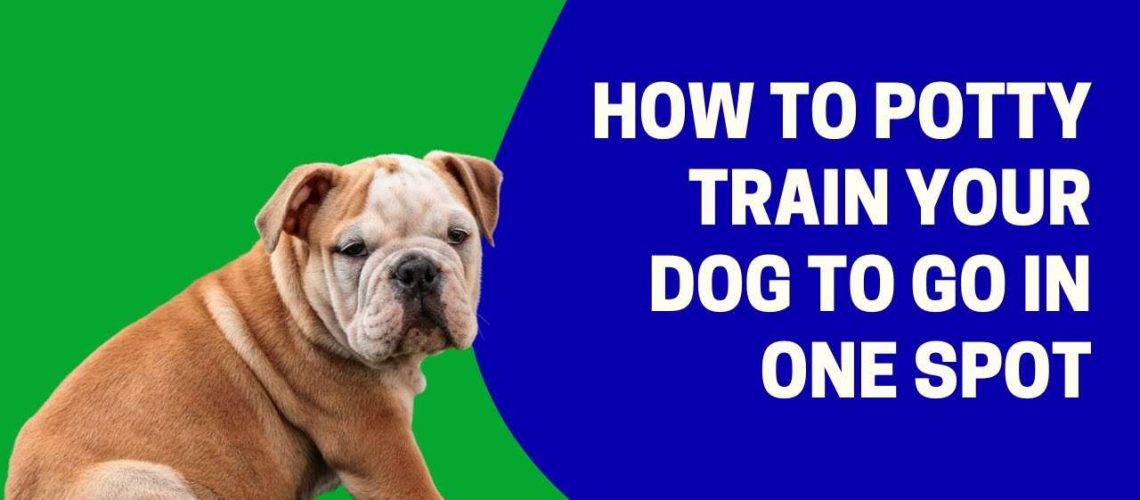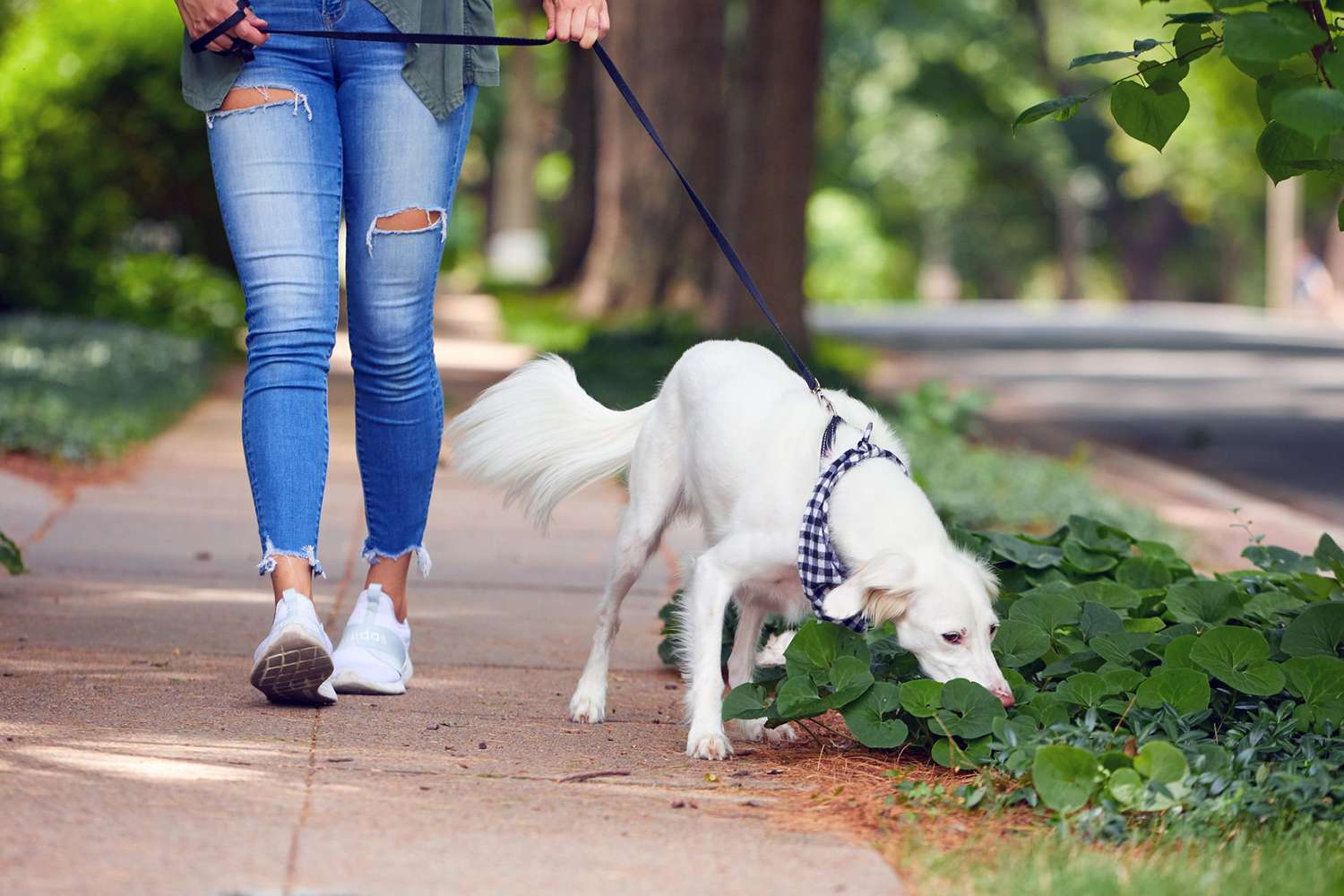Key Takeaways:
- Consistency is key: Establish a routine and take your dog to the designated spot at regular intervals throughout the day.
- Use positive reinforcement: Reward your dog with treats and praise every time they successfully go in the designated spot.
- Limit access to other areas: Keep your dog confined to a small space or use baby gates to prevent accidents in other parts of the house.
- Watch for signs: Pay attention to your dog's behavior, such as sniffing or circling, as these may indicate they need to go potty.
- Clean up accidents properly: Use an enzymatic cleaner to remove any trace of urine or feces, as residual odors can encourage repeat accidents in the same spot.
Are you tired of cleaning up messes all over your house? Do you dream of a day when your furry friend knows exactly where to go potty? Well, get ready to say goodbye to those frustrating accidents because today we're going to show you the secrets to potty training your dog to go in one spot. Not only will this save you time and energy, but it will also create a cleaner and more hygienic environment for both you and your beloved pet. Imagine never having to worry about stepping in a surprise puddle again! In this guide, we'll walk you through the simple steps to successfully teach your dog where they should do their business. So grab a pen and paper, because by the end of this article, you'll be well on your way to having a fully potty trained pup that knows just where to go.
What is Potty Training and Why is it Important for Dogs?
Potty training, also known as housebreaking, is the process of teaching a dog to eliminate waste in an appropriate place. It involves teaching them where and when to go potty, whether it's outside or on a designated indoor spot. Potty training is important because it helps dogs learn good hygiene habits and prevents accidents inside the house. It also makes it easier for owners to maintain a clean and odor-free living environment.
When dogs are not properly potty trained, they may relieve themselves anywhere they please, causing messes and potential health hazards. By teaching them where to go, we can prevent these issues and ensure that our furry friends have a comfortable and hygienic living space.
Benefits of Potty Training:
- Keeps your home clean and odor-free
- Prevents accidents inside the house
- Promotes good hygiene habits
- Maintains a healthy living environment for both humans and pets
Choosing the Right Spot for Your Dog to Go Potty
Choosing the right spot for your dog to go potty is crucial during the potty training process. Whether you have a yard or live in an apartment, finding a suitable location will help your dog understand where they should eliminate waste.
If you have a yard, designate a specific area where your dog can go potty. This could be a corner of the yard or a marked spot. Make sure it's easily accessible for your dog and away from areas where children play or where you spend most of your time outdoors.
If you live in an apartment or don't have access to outdoor space, consider using indoor potty pads or a designated area with artificial grass. Place the potty spot in a quiet and easily accessible location within your home.
Factors to Consider:
- Accessibility for your dog
- Away from high-traffic areas
- Easily cleanable surface
- Proximity to outdoor space (if applicable)
Simple Steps to Start Potty Training Your Dog
Potty training your dog can be a simple and straightforward process if you follow these steps:
- Establish a routine: Take your dog outside or to their designated potty spot at regular intervals throughout the day, such as after meals, naps, and playtime.
- Choose a command: Use a specific word or phrase, such as "go potty" or "do your business," when you take your dog to their potty spot. This will help them associate the command with the action.
- Be patient and observant: Keep an eye on your dog's behavior for signs that they need to go potty, such as sniffing around or circling. When you see these signs, quickly take them to the designated spot.
- Reward success: When your dog eliminates waste in the appropriate spot, praise them enthusiastically and give them a treat. Positive reinforcement will encourage them to repeat this behavior in the future.
- Clean up accidents properly: If your dog has an accident inside the house, clean it up thoroughly using pet-friendly cleaners. Avoid using ammonia-based products as they can attract dogs back to the same spot.
Using Positive Reinforcement to Encourage Your Dog's Bathroom Habits
Positive reinforcement is a powerful tool in potty training your dog. By rewarding them for good behavior, you can encourage and reinforce their desired bathroom habits. Here are some ways to use positive reinforcement effectively:
Rewards and Treats:
When your dog eliminates waste in the appropriate spot, immediately praise them with enthusiasm and give them a small treat. This positive association will motivate them to repeat the behavior.
Verbal and Physical Affection:
In addition to treats, use verbal praise and physical affection, such as petting or belly rubs, to show your dog that they've done well. Dogs thrive on positive attention from their owners, so make sure to shower them with love when they do the right thing.
Consistency:
Consistency is key when using positive reinforcement. Make sure to reward your dog every time they go potty in the appropriate spot, even if it's just a simple "good boy/girl" and a pat on the head. This consistent positive feedback will reinforce their understanding of what is expected of them.
Mistakes to Avoid While Potty Training Your Dog
Potty training can sometimes be challenging, but avoiding these common mistakes can help make the process smoother for both you and your dog:
Punishing Accidents:
Avoid punishing your dog for accidents or going potty in the wrong place. Punishment can create fear or anxiety around elimination, making it harder for them to learn where they should go.
Inconsistency:
Be consistent with your potty training routine. Take your dog out at regular intervals, use the same command word or phrase each time, and reward them consistently for going in the right spot. Inconsistency can confuse your dog and delay their progress.
Not Supervising:
Keep a close eye on your dog, especially during the early stages of potty training. Supervision allows you to catch accidents before they happen and redirect them to the appropriate spot. This helps reinforce the desired behavior and prevents setbacks.
Neglecting Cleaning:
If accidents happen inside the house, it's crucial to clean up properly using pet-friendly cleaners. If the scent of urine or feces lingers, your dog may be more likely to go potty in that area again.
How Long Does It Take to Fully Potty Train a Dog?
The time it takes to fully potty train a dog can vary depending on several factors, including the individual dog's age, breed, and previous training experiences. On average, it can take anywhere from a few weeks to several months for a dog to become fully potty trained.
Puppies generally have smaller bladders and less control over their bodily functions, so they may take longer to learn compared to adult dogs. Consistency, patience, and positive reinforcement are key during the potty training process.
It's important to remember that accidents may still occur even after a dog is considered potty trained. Changes in routine, health issues, or stressful situations can sometimes cause temporary setbacks. However, with continued reinforcement of good habits and consistency in training, these incidents should become less frequent over time.
Tips and Tricks for Easier Potty Training of Your Dog
Potty training can be made easier with these helpful tips and tricks:
Create a Schedule:
Establishing a consistent schedule for feeding times, walks, and potty breaks can help regulate your dog's bathroom habits. This routine will make it easier for them to understand when and where they should go.
Use a Crate or Confined Space:
When you cannot supervise your dog, confining them to a crate or a small designated area can prevent accidents. Dogs generally avoid soiling their sleeping or resting areas, making this an effective strategy for potty training.
Keep a Potty Journal:
Keeping track of your dog's potty habits in a journal can help you identify patterns and anticipate when they are likely to need to go. This information can be useful in establishing a more efficient potty training routine.
Patience is Key:
Potty training takes time and patience. Remember that accidents are part of the learning process, and getting frustrated or angry will only hinder progress. Stay positive, consistent, and patient with your furry friend as they learn this important life skill.
In conclusion, potty training your dog to go in one spot is a process that requires consistency and patience. By following the steps mentioned in this guide and providing positive reinforcement, you can successfully teach your dog to use a designated area for their bathroom needs.
How do you attract a dog to pee in one spot?
To begin the training session, use a verbal command and keep your dog on a leash to ensure they stay in the designated area. When your dog starts to urinate or defecate, say the command again and promptly reward them with praise, petting, a treat, or another valuable reward.
How do you train a dog to potty in one area?
To teach a dog to only use one designated spot, one method is to train it to go on command. Take the dog on a leash to the desired spot and give the command. Keep the dog in that spot until it goes, then give it a reward. Only reward the dog when it uses that specific spot.
How do I get my dog to stop pooping in the same spot in the house?
Make sure to clean up messes completely when your dog urinates or defecates. Dogs are drawn to return to areas they have eliminated in before. If you only clean a small amount, the dog will be tempted to revisit the spot. However, if you clean thoroughly, there will be no allure for the dog to go there again.
Is there a scent to encourage dogs peeing?
Potty training sprays contain a mixture of ingredients that emit a pleasant scent. This scent is highly enticing to dogs and will draw them to the area where the spray was applied. Potty training sprays are extremely helpful in the process of training a dog to do their business in the appropriate spot. For instance, if you want your new puppy to urinate on their designated pee pad.
What smells do dogs like to pee on?
Dogs are drawn to the scent of urine, particularly dog urine, and tend to urinate in those areas. This is why using cleaning products with ammonia to remove pee stains does not aid in potty training, as it only smells like more urine to the dog. Additionally, male dogs have a tendency to mark their territory with new scents.
How long does it take for a dog to learn where to pee?
It typically takes four to six months for a puppy to become fully reliable, although the timeframe can vary based on factors such as size, age, and learning ability. Some puppies may learn toilet training in just a few weeks, while others may take up to a year or longer.

















